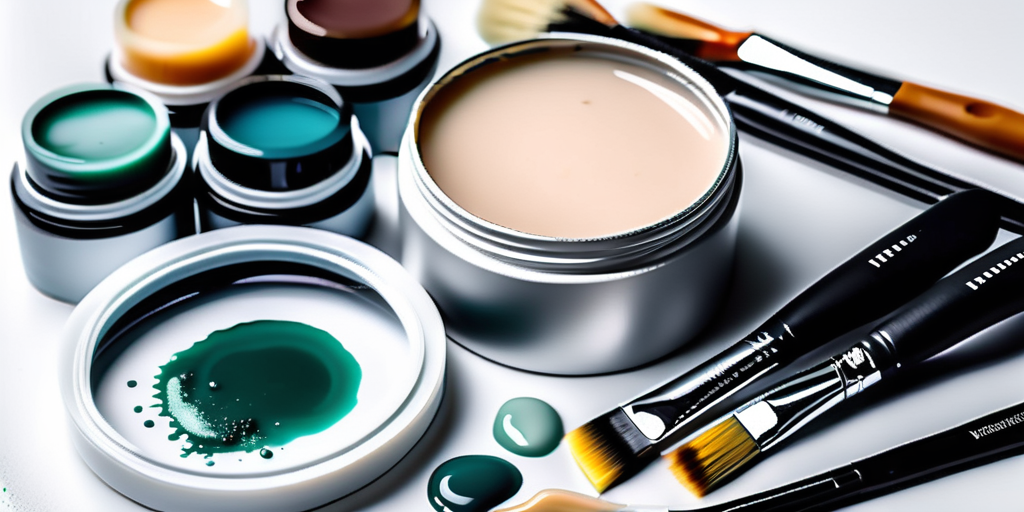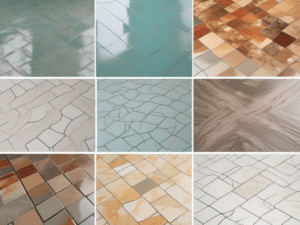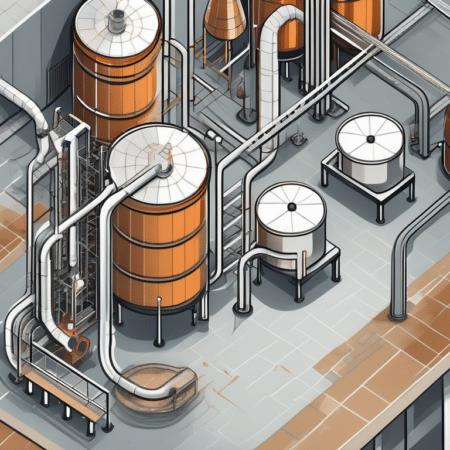Epoxy textures have become increasingly popular in various industries, from home improvement to art and design. The stunning effects that can be achieved with epoxy textures make them a favorite choice among DIY enthusiasts and professionals alike. Whether you are looking to enhance the beauty of your furniture or create unique artwork, this ultimate guide will provide you with all the information you need to achieve a stunning epoxy texture.
Understanding the Basics of Epoxy Textures
Epoxy texture refers to the visual and tactile qualities that can be achieved by applying epoxy resin to various surfaces. Epoxy resin is a type of synthetic polymer that, when mixed with a hardening agent, creates a strong and durable material with a smooth and glossy finish. By manipulating the application and texture of the epoxy, you can achieve different visual effects, such as depth, movement, and translucency.

What is Epoxy Texture?
Epoxy texture is the result of various techniques used to create patterns, designs, and unique effects on surfaces using epoxy resin. It allows you to transform a plain and ordinary surface into a work of art. Epoxy texture can be applied to a wide range of materials, including wood, concrete, and even canvas.
When it comes to creating epoxy textures, the possibilities are endless. You can experiment with different application methods, such as pouring, brushing, or spraying the epoxy onto the surface. Each technique will yield a different texture and visual effect. For example, pouring epoxy in a controlled manner can create beautiful marbling patterns, while brushing the epoxy can result in a more textured and layered appearance.
Furthermore, epoxy texture can be enhanced by incorporating various additives and pigments. These additives can create additional visual interest and depth in the texture. For instance, metallic powders can be added to the epoxy to create a shimmering and reflective surface, while colored pigments can be used to achieve vibrant and eye-catching effects.
Benefits of Using Epoxy Textures
There are numerous advantages to using epoxy textures in your projects. First and foremost, epoxy resin is highly durable and long-lasting, ensuring that your textures will stand the test of time. This makes it an ideal choice for high-traffic areas or surfaces that are prone to wear and tear.
Additionally, the versatility of epoxy textures allows you to unleash your creativity and achieve customized effects that cannot be replicated with other materials. Whether you want to create a sleek and modern look or a rustic and weathered appearance, epoxy textures can be tailored to suit your desired aesthetic.
Moreover, epoxy textures provide a protective layer, making the surface resistant to scratches, stains, and UV damage. This makes it an excellent choice for surfaces that are exposed to harsh environmental conditions or heavy use.
Furthermore, epoxy textures are easy to clean and maintain. Unlike other materials that may require special cleaning products or techniques, epoxy surfaces can be easily wiped clean with a damp cloth or mild detergent. This makes it a practical choice for both residential and commercial applications.
In conclusion, epoxy textures offer a wide range of possibilities for transforming surfaces into visually stunning works of art. With their durability, versatility, and ease of maintenance, epoxy textures are a popular choice among homeowners, designers, and artists alike.
Essential Tools for Creating Epoxy Textures
To achieve the best epoxy textures, it is important to have the right tools at your disposal. Here are some essential tools you will need:

Choosing the Right Epoxy Resin
Not all epoxy resins are created equal. It is crucial to select a high-quality epoxy resin specifically designed for creating textures. Look for a resin that has a long working time and is UV-resistant to ensure your textures retain their beauty over time.
When choosing an epoxy resin, consider the viscosity. A low-viscosity resin will flow more easily, allowing you to create smooth and even textures. On the other hand, a high-viscosity resin will hold its shape better, making it ideal for creating more intricate and detailed textures.
Furthermore, pay attention to the curing time of the epoxy resin. Some resins cure quickly, while others take longer. If you are working on a large project or want more time to manipulate the texture, opt for a resin with a longer curing time.
Importance of Proper Mixing Tools
Achieving a perfect epoxy texture requires proper mixing of the resin and hardening agent. It is essential to use precise measuring tools, such as graduated mixing cups and scales, to ensure accurate proportions. Additionally, a handheld mixer or stir stick can be used to mix the components thoroughly and reduce the chance of air bubbles forming.
When mixing the epoxy resin, it is important to follow the manufacturer’s instructions carefully. Improper mixing can result in uneven textures or incomplete curing. Take your time and mix the components thoroughly, ensuring that there are no streaks or clumps in the mixture.
For larger projects, consider using a drill with a mixing attachment. This will make the mixing process faster and more efficient, especially when working with larger volumes of epoxy resin. However, be cautious not to introduce too much air into the mixture, as this can lead to unwanted bubbles in your texture.
Furthermore, it is recommended to mix the epoxy resin in a well-ventilated area. Some epoxy resins emit strong odors during the curing process, so proper ventilation will help dissipate any fumes and ensure a comfortable working environment.
In conclusion, creating epoxy textures requires the right tools and attention to detail. By choosing the right epoxy resin and using proper mixing tools, you can achieve stunning and durable textures that will enhance any project.
Step-by-Step Process to Achieve Epoxy Texture
Creating stunning epoxy textures may seem daunting, but with the right techniques, anyone can achieve impressive results. Here is a step-by-step process to guide you:
Preparing the Surface
The first step in achieving a stunning epoxy texture is to prepare the surface properly. Clean the surface thoroughly to remove any dust, dirt, or debris. This is crucial as any impurities on the surface can affect the final texture. Additionally, if there are any existing coatings or finishes, they should be removed to ensure proper adhesion of the epoxy.
If necessary, sand the surface to create a smooth and even base for the epoxy application. Sanding not only helps in removing any imperfections but also provides a better surface for the epoxy to adhere to. Use a fine-grit sandpaper and make sure to sand in a circular motion to avoid leaving any visible marks.
Mixing and Applying the Epoxy
To begin the epoxy application, carefully measure and mix the epoxy resin and hardening agent according to the manufacturer’s instructions. It is essential to follow the recommended mixing ratios to ensure the epoxy cures properly. Avoid mixing too much epoxy at once, as it may harden before you can apply it.
Once the epoxy is mixed, you can start applying it to the prepared surface. Use a brush or roller to apply a thin layer of epoxy evenly over the surface. Make sure to work in small sections to prevent the epoxy from drying before you can manipulate it to create the desired texture.
It is important to note that epoxy has a limited working time, so it is crucial to work efficiently and avoid any interruptions during the application process. If needed, have a plan in place to ensure a smooth and continuous application.
Creating the Desired Texture
Once the base layer of epoxy is applied, you can start creating the desired texture. There are various techniques you can use, depending on the effect you want to achieve.
One technique is dragging a comb or squeegee through the epoxy to create lines or waves. This method can create a mesmerizing pattern that adds depth and visual interest to the surface. Experiment with different comb sizes and angles to create unique and intricate designs.
Another technique involves using a heat gun to create movement and patterns in the epoxy. By applying heat to the surface, the epoxy reacts and creates fascinating swirls and organic shapes. Be cautious when using a heat gun and keep it at a safe distance from the epoxy to prevent overheating or scorching.
Additionally, you can incorporate various objects or tools to create texture. For example, using a sponge or a brush with stiff bristles can add a textured effect to the epoxy. You can also sprinkle glitter, metallic powders, or colored pigments onto the wet epoxy to enhance the visual appeal.
Remember, the key to achieving the desired texture is experimentation. Don’t be afraid to try different tools, techniques, and materials to create unique and captivating epoxy textures.
Troubleshooting Common Epoxy Texture Problems
Even the most experienced epoxy texture artists may encounter challenges along the way. Here are two common problems and how to overcome them:
Dealing with Bubbles in Epoxy
Bubbles can sometimes form when applying epoxy, detracting from the final texture. To prevent bubbles, ensure that your workspace is free from dust and that the epoxy resin and hardener are thoroughly mixed. If bubbles still appear, use a heat gun or blowtorch to carefully pass over the surface, removing the bubbles as they rise.
Fixing Uneven Textures
If your epoxy texture turns out uneven or patchy, don’t panic. You can fix this issue by lightly sanding the surface to smooth out any imperfections. Once sanded, you can reapply a new layer of epoxy and repeat the texture creation process.
Maintaining Your Epoxy Texture
After achieving your stunning epoxy texture, it is important to properly maintain it to ensure its longevity. Here are some cleaning and care tips:

Cleaning and Care Tips
Regularly clean your epoxy texture with a mild detergent and warm water. Avoid using abrasive cleaners or scrub brushes, as they may scratch the surface. When placing items on your textured surface, use coasters or felt pads to prevent scratches. Additionally, periodic reapplication of a protective epoxy coating may be necessary to maintain the texture’s luster and durability.
When to Consider Reapplication
Over time, your epoxy texture may show signs of wear and tear, such as fading or scratches. If this occurs, it may be time to consider reapplying a fresh layer of epoxy to refresh the texture and restore its beauty. Assess the condition of your texture regularly and plan for reapplication as needed.
With this ultimate guide, you are now equipped with the knowledge and tools to achieve a stunning epoxy texture. Whether you are a beginner or a seasoned epoxy artist, experimenting with different techniques and materials will allow you to create one-of-a-kind textures that will leave a lasting impression.












